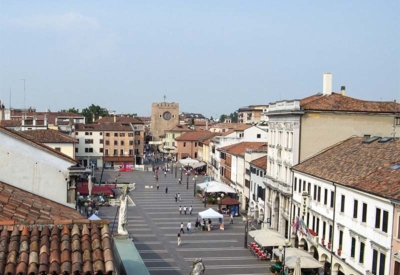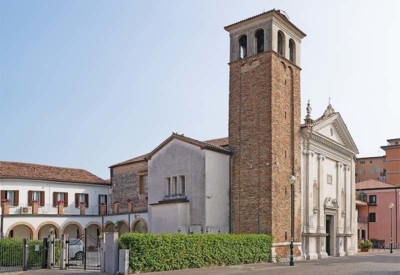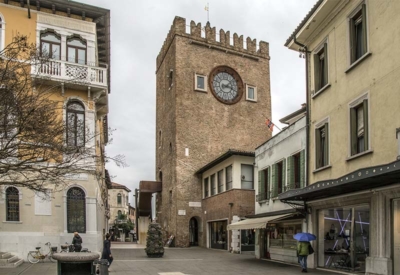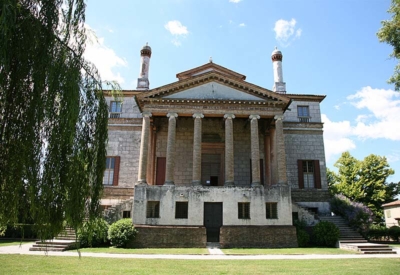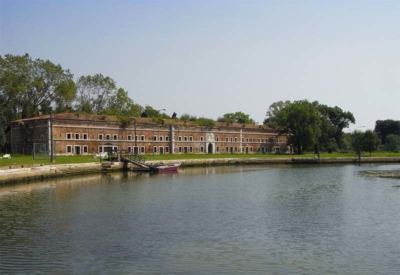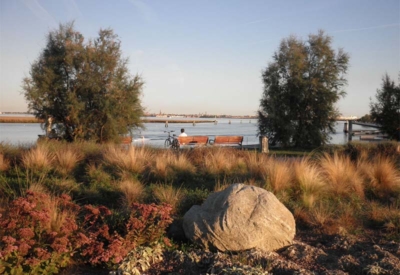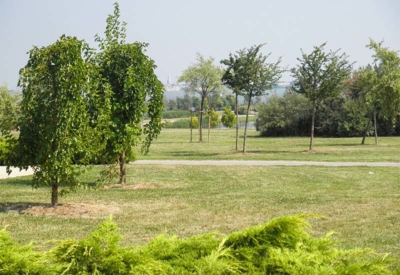MESTRE
Mestre, a vital hub of the North-East, is a city of almost one hundred thousand inhabitants, located on the mainland at the edge of the Venice Lagoon. Built on a Roman castelliere or castrum (Castelvecchio) located between the two branches of the Marzenego river, it became a walled city of which few vestiges remain (apart from sections of walls and the city tower) first under the signoria of Treviso and then Venice (in the 14th century).
During the Renaissance, the city was enhanced by the two public buildings of the Provvederia (1459) and the Podestà (1466), and by many patrician ‘villa houses’ (the Malvolti, Grimani, Caffi, Erizzo, Berchet, Tivan and Papadopoli-Furstemberg villas, etc.). As the transport and supply hub for Venice, between the late 19th century and the first half of the 20th century, Mestre saw the start of an expansion that would make it the most important Mediterranean industrial area.
Worth Visiting
Villa Erizzo, home of Mestre’s library and Villa Querini (headquarters of the council offices).
Villa Querini, seat of municipal offices
Villa Foscari “La Malcontenta”, by architect Andrea Palladio.
Other Veneto villas: Barbarich, Berchet, Bisacco, Bragadin, Caffi, Franchin, Gradenigo, Ivancich, Malvolti, Marini/Missaglia/Matter, Papadopoli/Furstemberg, Raspi, Tivan and Traldi, etc.
The M9 Museum at the ex-convent/Austrian military barracks in via Poerio.
The “Mabilia” Theatre at the Antica Scuola dei Battuti
The Church of San Girolamo (1261) in the street of the same name
Santuario della Madonna della Salute in via Torre Belfredo
Church of San Rocco (1475) in via Manin
Church of San Lorenzo (a Medieval church rebuilt in the late 18th century).
The City or Clock Tower (13th century) in Piazza Matter or delle Erbe
Part of the walls of the “Città Murata” in via Torre Belfredo and on the corner between via dei Battuti and via Spalti.
Palazzetto “Scoletta dei Battuti (1302)
The Sanctuary of S. Maria delle Grazie in via Poerio
Don’t Miss
The Mestre Wood, in via Altinia between Favaro V.to and Dese
The Carpenedo Woodland Biotope, in via del Boschetto and via del Tinto
The Honey Locust (Gleditsia triacanthos), a centuries-old tree in Via Mestrina in the Altobello area park and centuries-old cedars in the Villa Tivan park in Via Terraglio.
The Forts of the Mestre entrenched camp: Forte Marghera, Forte Carpenedo or Vallon, Forte Tron, Forte Gazzera or Brendole, Forte Cosenz and Forte Mezzacapo, among others

